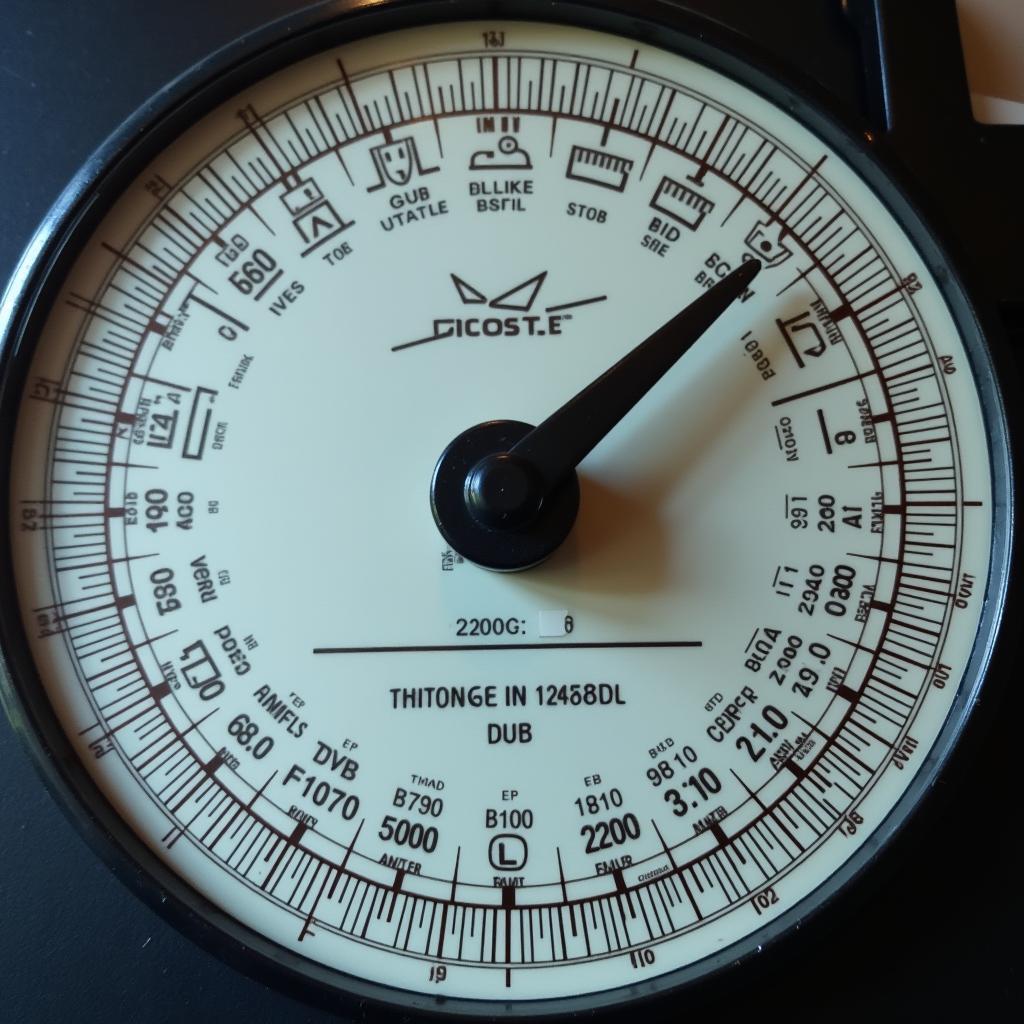The analog tachograph, once an indispensable tool in commercial freight and passenger transport, has come to the end of its lifespan. Since May 1, 2006, newly registered vehicles must be equipped with a digital tachograph. But what does this mean for drivers and companies still operating with analog systems? This article sheds light on the most important aspects of the analog tachograph.
What is an Analog Tachograph?
An analog tachograph is a mechanical recording device that records various data during a journey on a tachograph chart. The most important recordings include:
- Driving time: The time the driver spends at the wheel.
- Driving period: The time the driver is actually driving.
- Speed: The speed of the vehicle.
- Distance: The distance traveled.
 Close-up of an analog tachograph chart
Close-up of an analog tachograph chart
The data is recorded on a round tachograph chart, which consists of several layers of paper and can be checked for authenticity with a special diagnostic tester. “Analog tachographs were indeed susceptible to manipulation,” explains Dr. Ing. Markus Schmidt, an expert in vehicle technology, “but they provided valuable information about driving operations and served to ensure compliance with driving and rest times.”
How an Analog Tachograph Works
The analog tachograph is mechanically driven by the rotation of the vehicle’s drive axle. The recording is done by several styluses that mark the data on the rotating tachograph chart. Different colors are used depending on the type of data recorded.
Advantages and Disadvantages of the Analog Tachograph
Although the analog tachograph has been replaced by its digital successor, it had some advantages:
- Simple operation: The operation of the analog tachograph was intuitive and easy to understand.
- Lower acquisition costs: Analog tachographs were cheaper to purchase than digital systems.
However, these advantages were offset by several disadvantages:
- Susceptible to manipulation: The data on the tachograph charts could be relatively easily manipulated.
- Storage obligation: Tachograph charts had to be stored for an extended period, leading to significant administrative overhead.
- Data evaluation: Data evaluation from tachograph charts was time-consuming and error-prone.
Analog Tachograph in the Digital Age
With the introduction of the digital tachograph, the analog tachograph has essentially lost its significance. Digital systems offer enhanced tamper-proof security, simplify data archiving, and enable more efficient data analysis.
 Digital tachograph installed in a truck cab
Digital tachograph installed in a truck cab
Nevertheless, there are still vehicles equipped with analog tachographs. For drivers and companies using these vehicles, it is important to know how the analog tachograph works and to comply with the legal requirements for storing and archiving the data.
Frequently Asked Questions about the Analog Tachograph
- How long must analog tachograph charts be stored? The retention period is generally one year.
- Who is authorized to analyze analog tachograph charts? Analysis must be performed only by authorized personnel.
- What happens if an analog tachograph fails? If an analog tachograph fails, it must be repaired or replaced immediately.
Further Information
You can find more helpful information about automotive technology on autorepairaid.com. Do you need support with the repair or maintenance of your vehicle? Our experts are at your disposal. Contact us today!
